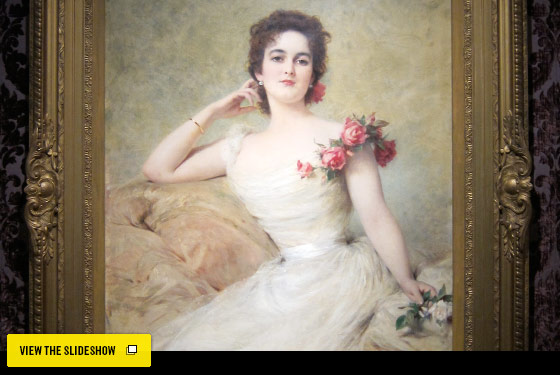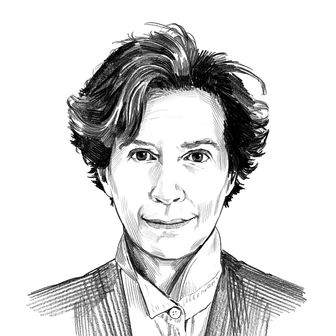

This 1896 portrait of Mrs. Joseph De La Mar, the wife of a wealthy Holland-born miner, is one of the many featured in the new gallery. Her look of entitled beauty perfectly summed up the new Gilded Age society, the millionaires and palace-dwellers who were soon to upstage the old guard of Mrs. Astor’s New York. Photo: Courtesy of the Museum of the City of New York

The Gilded Age gave birth to a new celebrity culture. Here’s a front-page bulletin illustrating a “fancy dress ball” in 1883 at another Vanderbilt mansion, this one, at 660 Fifth Avenue, belonging to William K. Vanderbilt and his wife, Alva. Their party for 1,200 guests was the talk of the town for weeks. Alva had been ignored by Mrs. Astor, the high priestess of old-money New York society, until this party. Afterward, Mrs. Astor was forced to pay her a call to ensure that her daughter received an invite. Photo: Courtesy of the Monacelli Press, from Gilded New York

The exhibition at the Museum of the City of New York includes the dress that Mrs. Cornelius Vanderbilt wore to this ball. Designed by Charles Frederick Worth, the most famous Parisian couturier of the day, and made of satin, velvet, and silver bullion, Mrs. Vanderbilt’s costume was meant to represent “Electric Light,” in honor of Thomas Edison’s new power station in New York. “A Worth dress was a significant status symbol,” curator Phyllis Magidson explains. “He never did house calls, not even for royalty, so clients, if they were accepted by Worth, had to travel to Paris for their fittings. And they had to have the money to buy it; A Worth dress was the most costly garment of its day.” Photo: Wendy Goodman

European royalty had nothing over the Astors, as evidenced here in the photograph of the John Jacob Astor IV ballroom designed by Richard Morris Hunt. As incredible as it is to think of these palaces being built, it is even more incredible to imagine the wrecking ball taken to them all. Photo: Courtesy of the Monacelli Press, from Gilded New York

William T. Georgis designed both the gallery and the exhibit. “We began by researching historical photographs of the period to see how people were creating their interior worlds,” Georgis says. He installed new herringbone floors, mirrored window shutters, curtains, and a green velvet tiger-print ottoman “that would have had a vase placed on top during the period.” He adds: “We found velvet damask fabric woven in England to upholster the walls. If you look at salons during that time, they were often hung with rich fabrics and tapestries that would be layered with paintings and objects.” Georgis also created a ladies salon at the end of the room with a mantel, fire screen, and chandelier from the Museum’s collection. Photo: Wendy Goodman

The Gilded Age couldn’t get enough costume parties, and here debutantes and their Pierrot-costumed partners are seen dancing at the James Hazen Hyde Ball in 1905. Photo: Courtesy of the Museum of the City of New York, Byron Collection

The new gallery features recently refurbished Fifth Avenue windows with views to the park. This gilt-bronze annular clock was designed by Eugene Bazart. Photo: Wendy Goodman

The over-the-top, just-because-we-can attitude of the age was personified by events like the “Horseback Dinner” hosted by C.K.G. Billings at Sherry’s restaurant, seen here. I think Nucky Thompson must be in there somewhere. Photo: Courtesy of the Museum of the City of New York, Byron Collection

In this painting, Cornelia Ward and Her Children, Ward’s daughter is seen studying fashion illustrations with the help of her brothers. Photo: Courtesy of the Museum of the City of New York

